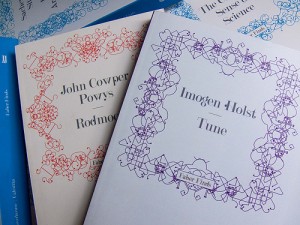SamiaAhmed-Final-Final
Daily Life is a generative book.

Daily Life is a generative book. With it I strove to codify and programmatically structure the rules I use to design so as to make a book that designs itself. Daily Life is a program that reads in data (schedules I kept sophomore year of everything I did every day), allows me to choose a color palette and grid structure, and then generates a book of a desired length.
Inspiration
After wrestling with the previous assignment (generative), I found that I had a hard time grasping what it means to make generative art or design, and the process of going about making generative work. In that previous project, I dove in head first into the code, and ultimately that hindered me, because I did not have a sense of what my vision was that I was implementing in code. I realized in doing that project, that I needed to find a better approach to generative work, rooted in my understandings of the process-driven design approach. In this final project, I tried to encorporate more of that. I spent time thinking and sketching about how I wanted to create parts of my book, and that when I finally made it to coding, I was making fewer important design decisions, and instead figuring out the best ways to implement and create the vision that I had already defined.
References
The Written Images book.
 PostSpectacular genre book covers
PostSpectacular genre book covers
 Amazing But True Stories about Cats
Amazing But True Stories about Cats
Process
My process for this project began with sketching.

As I began working, one of my hardest challenges was working with two halves of the program — creating a system for the rules and output, as well as creating the visualizations themselves. My first checkpoint was making a program that allowed me to create a number of pdfs that I determined (documented in my checkpoint blog post). After that, it became a game of implementation, firstly, building the grids and color palettes (the color palettes took a lot of time wading through toxilibs documentation, which is rather robust, but has fewer examples than I would have liked), and then creating a series of different visualization-methods called by the program.
Reflection
Overall, I feel like I had a solid learning experience with this project, scoping it out in a ways that gave me concrete objectives to reach. I found that when I got in to the details of it, that generative work is incredibly nuanced and difficult to manage. Though I had a fairly successful output, there were so many details of codifying the rules of design that I wanted to see implemented, that even just dealing with the smallest visual paradigm resulted in many many many edge cases that needed resolution. As a result, the final product I have (though I think I did make a lot of strides forward) is no where as near to sophisticated as I would have liked (especially in terms of typography). I was amazed at how much time and detail it took to realize and resolve very small aspects of the design of the pages. Additionally, I found that by spending so much time dealing with the “data-ness” of my data (past schedules), that I felt somewhat limited in how to represent it, as opposed to simply creating a narrative of visualizations that I specifically curated for the book. However, without the guiding constraints of working with a set of data, I’m not sure that I would have had as successful of an output, because I may have just spent my time worrying about what I was making, as opposed to spending time making that thing.